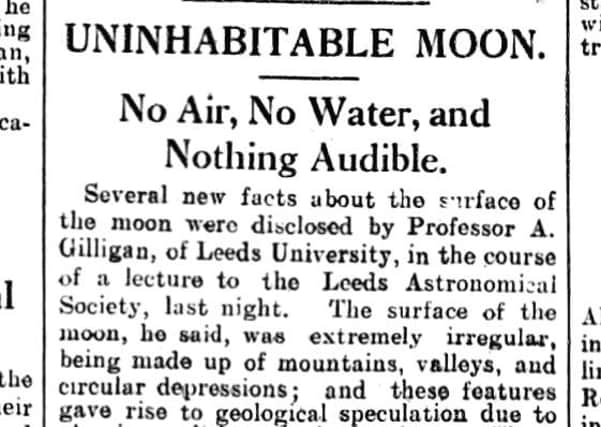On this day in Yorkshire 1930
This article contains affiliate links. We may earn a small commission on items purchased through this article, but that does not affect our editorial judgement.


Several new facts about the surface of the moon were disclosed by Professor A. Gilligan, of Leeds University, in the course of a lecture to the Leeds Astronomical Society, last night.
The surface of the moon, he said, was extremely irregular, being made up of mountains, valleys, and circular depressions; and these features gave rise to geological speculation due to the inequalities of the surface.
Advertisement
Hide AdAdvertisement
Hide AdThese inequalities differed considerably from those on the surface of the earth, being very much larger than any comparable things here. Some of the mountains on the moon reached a height of 36,000 feet, whereas our highest mountain was 28,000 feet; and some of the depressions went down a distance of two miles and wore thus only comparable with our oceans.


In a reference to such scientific fancies as H. G. Wells’s “First Men in the Moon,” the Professor showed how difficult life on the moon would be.
There was no air and no water, and no such thing as sound. Conversation would be impossible, for since there was no air, nothing would be audible. Everything would be visible only by direct sunlight, as there was no such thing as diffused light, and a person once out of the direct rays of the sun would not seen.
The force of gravity was only one-sixth of what it was on the earth, and everything would thus lose five-sixths of its weight. A man who could jump six feet the earth could clear 36 on the moon.
Search through our archive papers and much more at the http://www.britishnewspaperarchive.co.uk